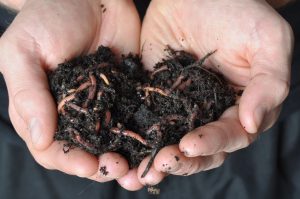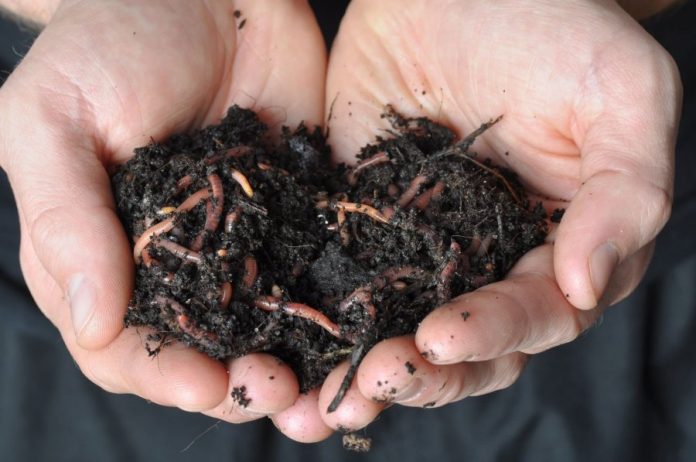 The last time some crazy person counted, 22,000 kinds of marine and terrestrial segmented worms shared the planet with the rest of us.
The last time some crazy person counted, 22,000 kinds of marine and terrestrial segmented worms shared the planet with the rest of us.
Four species of terrestrial or earthworms inhabit and help maintain healthy garden soil: garden worms, long nightcrawlers, red wigglers that get stumbling drunk on kitchen scraps and occasional manure worms; whose name says it all.
Dig up a spade full of your garden soil then count worms. Howard Garrett says you want to see 10 or more. In much of North Central Texas, the chances are high you won’t find any and this goes a long way toward explaining vegetable garden disappointments that commercial fertilizers cannot cure.
Earthworms live in moist, dark, cool-ish environments rich in decomposable composts and mulches, which they munch around the clock.
So, what does your garden soil look like on an average day? Ideal soil consists of about half decomposing materials and half mineral stuff, with a generous dose of dampness.
Worms barge or gobble their way through damp, crumbly soils. Charles Darwin called worms nature’s ploughs. Every 24-hours they excrete their body weight in pinhead-sized excretions and eggs called “castings.” Castings lodge in the soil and create miniscule spaces that fill up with water or oxygen. Gardeners with big budgets buy black castings in small bags at nurseries.
Plant roots house bacterial and fungal colonies that break down rocky soil minerals. Roots grow into these subterranean “pores” where everybody below the surface drinks and breathes.
Worms carry on in tunnels about as wide as a pencil. Their burrows and castings can increase soil porosity up to 400-percent. An acre of ideal soil may contain half-a-million worms that in a year’s time can produce 100,000 pounds of castings. For the mathematically-challenged, that’s 50-tons of a “spicy enchilada” no plant can resist.
However, worms are living creatures that require food and water. A half-pound of healthy worms can consume 3-4 pounds of food in a week. Fortunately, they aren’t picky about the condition of their meals, so give your garbage disposal a rest. Torn and rotten stuff is just dandy, since they don’t have teeth. They like dead stuff: old leaves, twigs, wood chips, bark, animal corpses, grass clippings and straws, kitchen detritus, wild animal excrements and water. They gobble wet paper towels, shredded newspaper and papier maché egg cartons for dessert.
Keep meats, dairy products, human and household pet feces, plus greases out of the garden, because those items: (a) create stinky gases during decomposition; and, (b) harbor stubborn toxins that make people sick.
Worms are “Good Time Charlies” that leave the area when the food and water run out, so a gardener’s biggest challenge is to make sure the proverbial fridge is stocked. Bring on the food and drink and it won’t take the little freeloaders long to move in with their friends and families.
In hot areas like North Central Texas, soil decomposition moves along at a faster pace than in Deadhorse, Alaska.
Local soil depths decrease visibly in one growing season; and, we have two every year. Armed with that information, local gardeners should refresh their planting areas and feed their worms with at least one-inch of new compost twice a year.









 GIF.gif)






